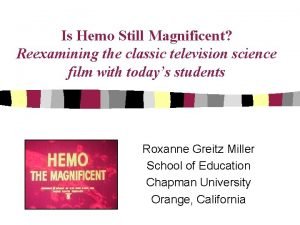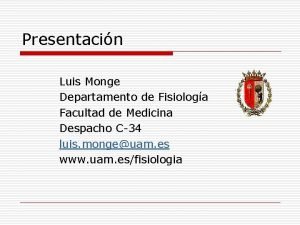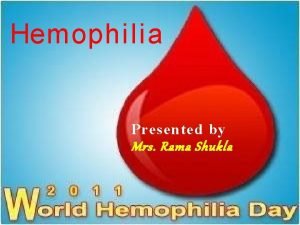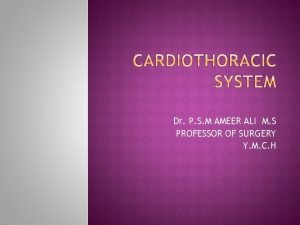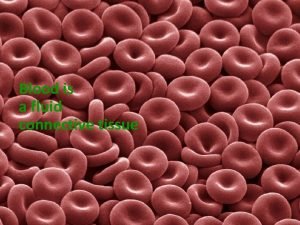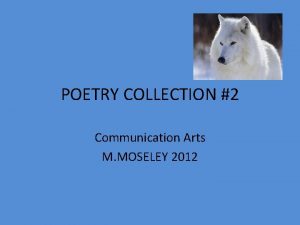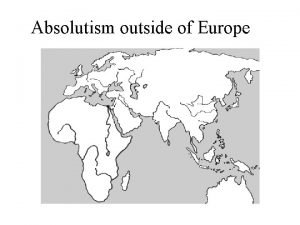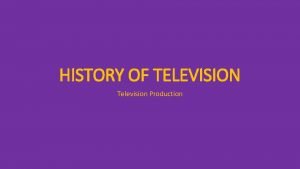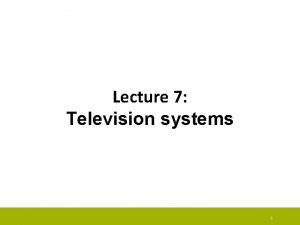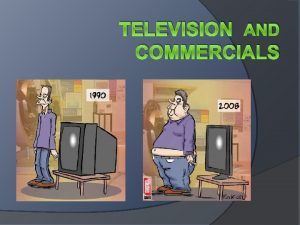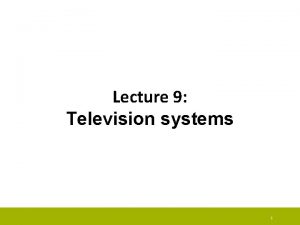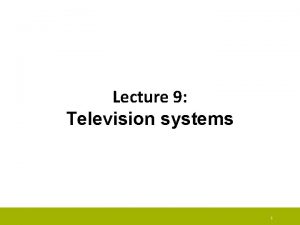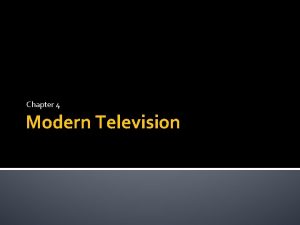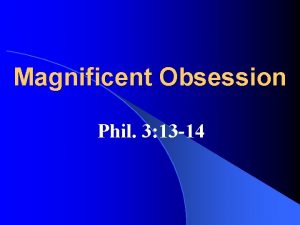Is Hemo Still Magnificent Reexamining the classic television













- Slides: 13

Is Hemo Still Magnificent? Reexamining the classic television science film with today’s students Roxanne Greitz Miller School of Education Chapman University Orange, California

History and background n n n Film produced in 1957; second in Bell Telephone Science Laboratories series made for television (adult audiences; 10 pm show time) Produced by Frank Capra; film awarded Emmy in 1958 for best cinematography Covers the structure and function of the circulatory system Combines live actors, animation, and clips of actual processes in animal and human specimens Relies heavily on metaphors, analogies, and comparisons to explain physiology

Introduction to schools & impact Film made available to schools in 16 mm format in early 1960’s; shown in numerous classrooms and grade levels from 1960’s to early 1980’s n Regarded by many as most influential educational film ever seen in school, evidenced by publicly available commentary and reviews n Credited with influencing multiple scientists and physicians to pursue science as a career n

Recent years Film was discontinued in many schools due to the conversion from 16 mm to videocassette and DVD players n Abandoned by some because of references to religion and outdated appearance of some scenes (clothing, linguistic style) n In 1990’s, film became available in videocassette and in 2003 on DVD; DVD was introduced in the public market and renewed interest in the film and its applicability to today’s student audience n

Pilot Study n Conducted in Spring 2006 at two ethnically diverse public elementary schools in southern California n Four 5 th grade classes & their teachers; 103 students shown film and asked to complete questionnaire n Students viewed film after completing unit of instruction on human circulatory system (5 th grade CA science standard) n None of the students or teachers had seen the film previously

Literature on student & teacher knowledge of circulatory system Pelaez, Boyd, Rojas & Hoover (2005) document that the vast majority of elementary teachers in their study possessed significant misconceptions about circulatory system structure and function n Yip (1998) showed that both novice and experienced teachers held similar misconceptions n Students of a variety of ages (elementary through undergraduate) hold multiple misconceptions about circulation (Arnaudin & Mintzes, 1985: Reiss & Tunnicliffe, 2001) n

Literature on learning & film The brain deals with images differently than with the printed word or verbal information (Merringoff, et al, 1983); words are processed in the neocortex (higher thinking capability area); pictures are rapidly handled in the limbic system - triggering instinct, emotion and impulse (Bergsma, 2002). n Television and film offer information in multiple forms, enabling learners “to learn through both verbal and visual means, to view actual objects and realistic scenes, to see sequences in motion, and to view perspectives that are difficult or impossible to observe in real life” (Wetzel, 1994). Because the various sources in television present additional complementary information, it increases the chances that comprehension will take place (Kozma, 1991). n While Hemo the Magnificent contains multiple elements (e. g. diagrams, analogies, and realia) proven to be effective in conveying scientific information (cf Chiu & Lin, 2004; King, 1999; Lowe, 2004 for reviews of research), it was hypothesized that the now dated appearance of some of the footage may reduce the effectiveness of the content presentation with the more technically -savvy students of today. n

Research questions: How do today’s students perceive the effectiveness of the film, given its age? n What elements contained within the film (style, presentation, dialog, etc. ) contributed to its effectiveness in explaining key science concepts? n What “lessons” can be learned from the effective design and presentation elements of this film to guide the selection of other film and television media for use in science education programs? n What role can this particular film play in current and future science education? n

Q 1: Effectiveness of the film on students’ knowledge, despite its age: Student self-rating of knowledge of circulatory system prior to viewing film and after n Self-rating used rather than empirical test as this was exploratory study intended to find if the film warrants full empirical study (i. e. , if students did not judge film as effective or interesting, would not pursue study further) n n Prior to film: – 10% of students stated they understood only parts of the circ. system – 16% understood half of the material – 60% understood most of it – 15% understood it completely n After the film: – 2% understood only parts of circ. system – 48% understood most of it – 52% understood it completely

Q 2: What elements contributed to its effectiveness in explaining science concepts? n Students rated the following as most significant elements, from free response question: – 47% cited animated analogy sequences where the circulatory system’s function is represented – 34% cited seeing actual functioning hearts and blood vessels

Q 3: Lessons to be learned to guide the selection of other film and television media for use in science education programs? n Students asked to comment in free response section on what their least favorite elements were and what they would change if they could remake the film: – The references to evolution and life emerging from the sea presented the most challenging topic for these students to understand (12% citation) – Majority of other comments related not to content, but to updating of presentation to be more aligned with current day animation techniques - using more color, better sound, and including more current medical technology in the live footage.

Q 4: What role can this particular film play in current and future science education? 75% of students responded that they would definitely recommend this film be shown as it helped to increase their understanding n 21% responded they might recommend it be shown n 4% stated that would not recommend it be shown n All teachers responded that they would like to show the film in the future, both before and after teaching their unit. n

Future implications Student study underway to establish whether the showing of the film directly impacts student knowledge of circulatory system. n Variant exploring whether the film should be shown at the outset of instruction, at the conclusion, or both, for maximum impact. n Teacher study underway to examine impact of film on correcting teachers’ misconceptions about the topics. n
